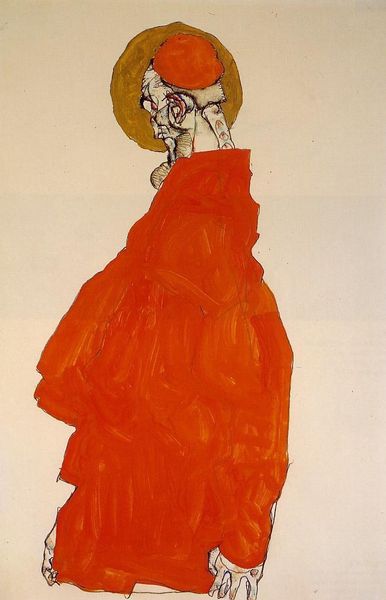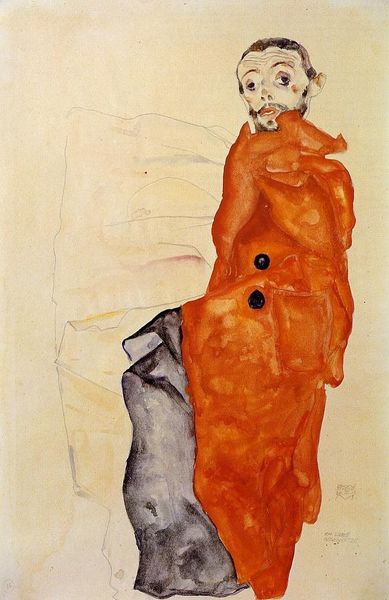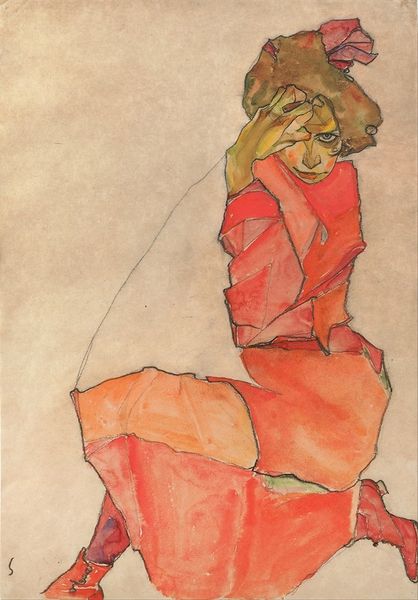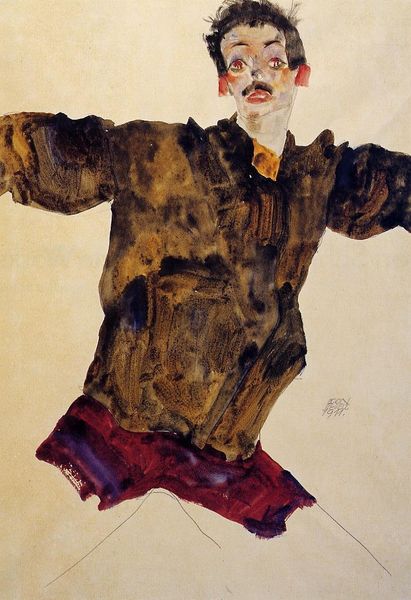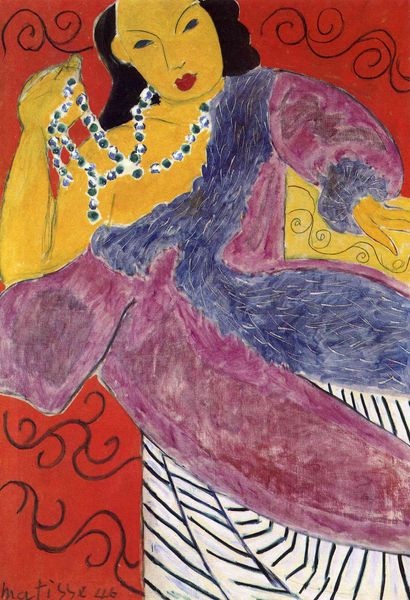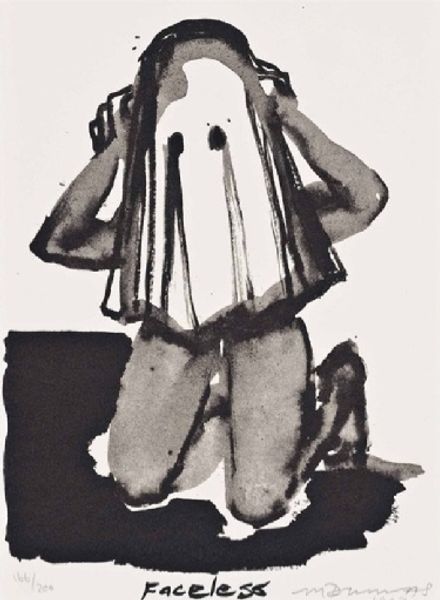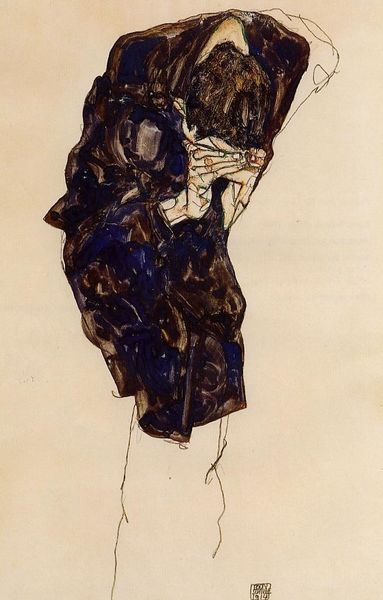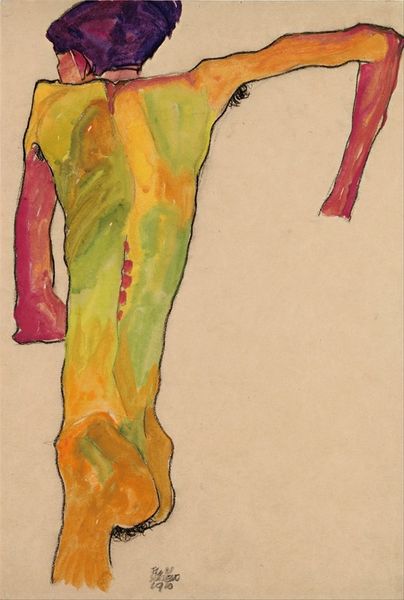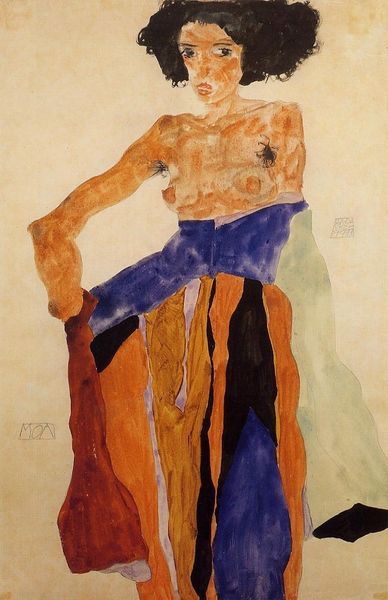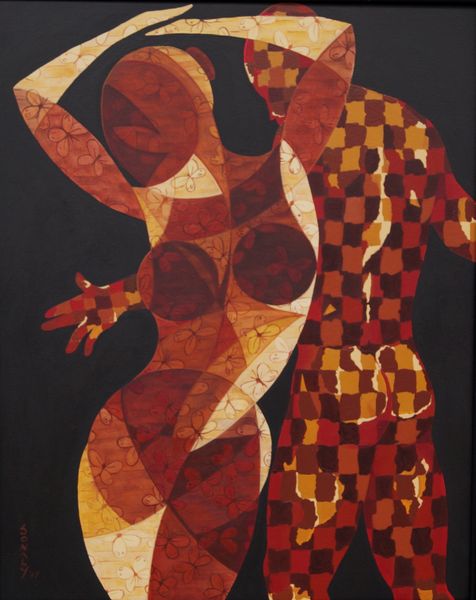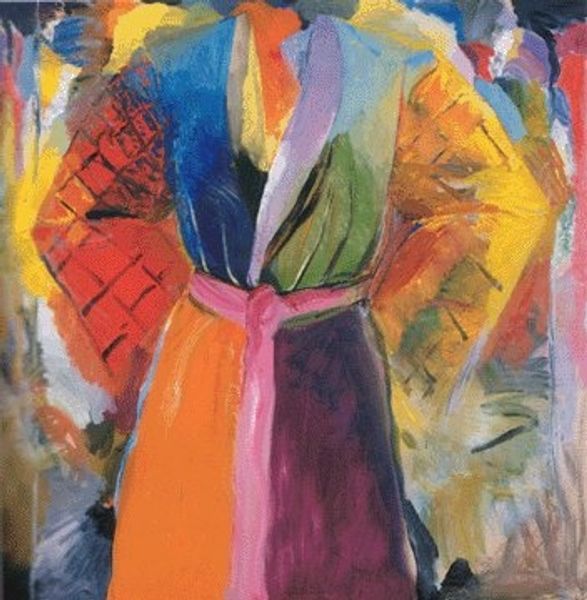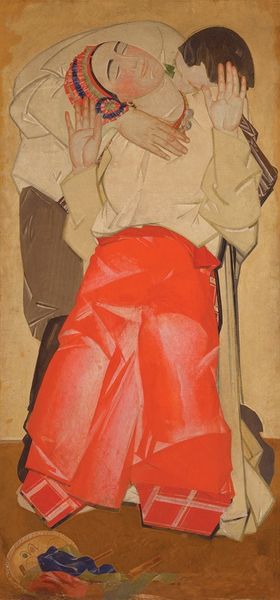
Copyright: Public domain
Curator: This is Egon Schiele’s "The Truth was Revealed," painted in 1913. Schiele, of course, was a prominent figure in Austrian Expressionism. Editor: My goodness, the raw, almost painful vulnerability just leaps out! The colours are startling, but it’s the awkward, exposed posture that really hits you. Curator: The figure, widely interpreted as a self-portrait combined with an allegorical representation of truth, is rendered with these very agitated, visible brushstrokes in oil on canvas. We see the process of painting laid bare. What do you make of his use of costume, or lack thereof? Editor: It feels almost performative, doesn’t it? Like truth is a role he’s donning, reluctantly. Or perhaps revealing... layer by layer, shedding pretenses in his usual brazen fashion. I wonder what prompted him, or who challenged him before creation, into this self-reckoning, this rather courageous exploration of his core. It seems he may be implying, quite boldly, the notion of a deep confrontation with oneself when uncovering truths. Curator: I think that's insightful. The material reality of the costume, this bulky garment made to hide, juxtaposes beautifully, even tragically, with the implied nakedness, the bare honesty Schiele sought in his self-exploration. Schiele frequently depicted figures contorted into these sort of emotionally raw positions, perhaps a direct result from his interactions and observations from working with patients in psychiatric clinics. What appears simple can contain significant commentary on the state of labor and creation. Editor: Yes! He's literally dissecting himself for the viewer. Stripping himself, in more than just the physical sense, and laying his soul on the canvas with an incredible emotional rawness. He really forces you to consider your own masks, your own hidden truths. The vulnerability is like a mirror reflecting the darkest parts of ourselves we hide and avoid at all costs. What seems to strike me the most are those unsettling gazes, which might come off as being somewhat erratic to a few. Curator: Looking closely at the making and materiality certainly adds a fascinating layer of social critique here. He forces us to reflect on art’s means of production. Editor: Absolutely. It becomes so much more than just a portrait. I almost want to apologize for intruding on such a personal moment!
Comments
No comments
Be the first to comment and join the conversation on the ultimate creative platform.
